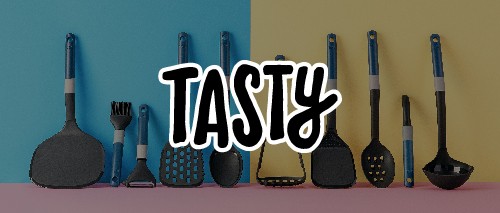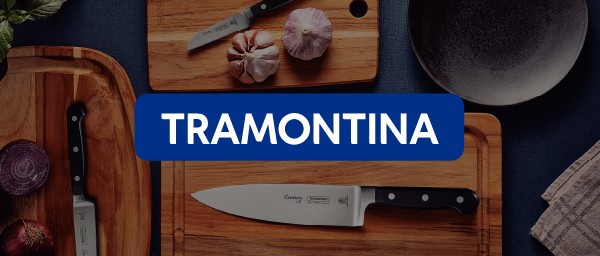
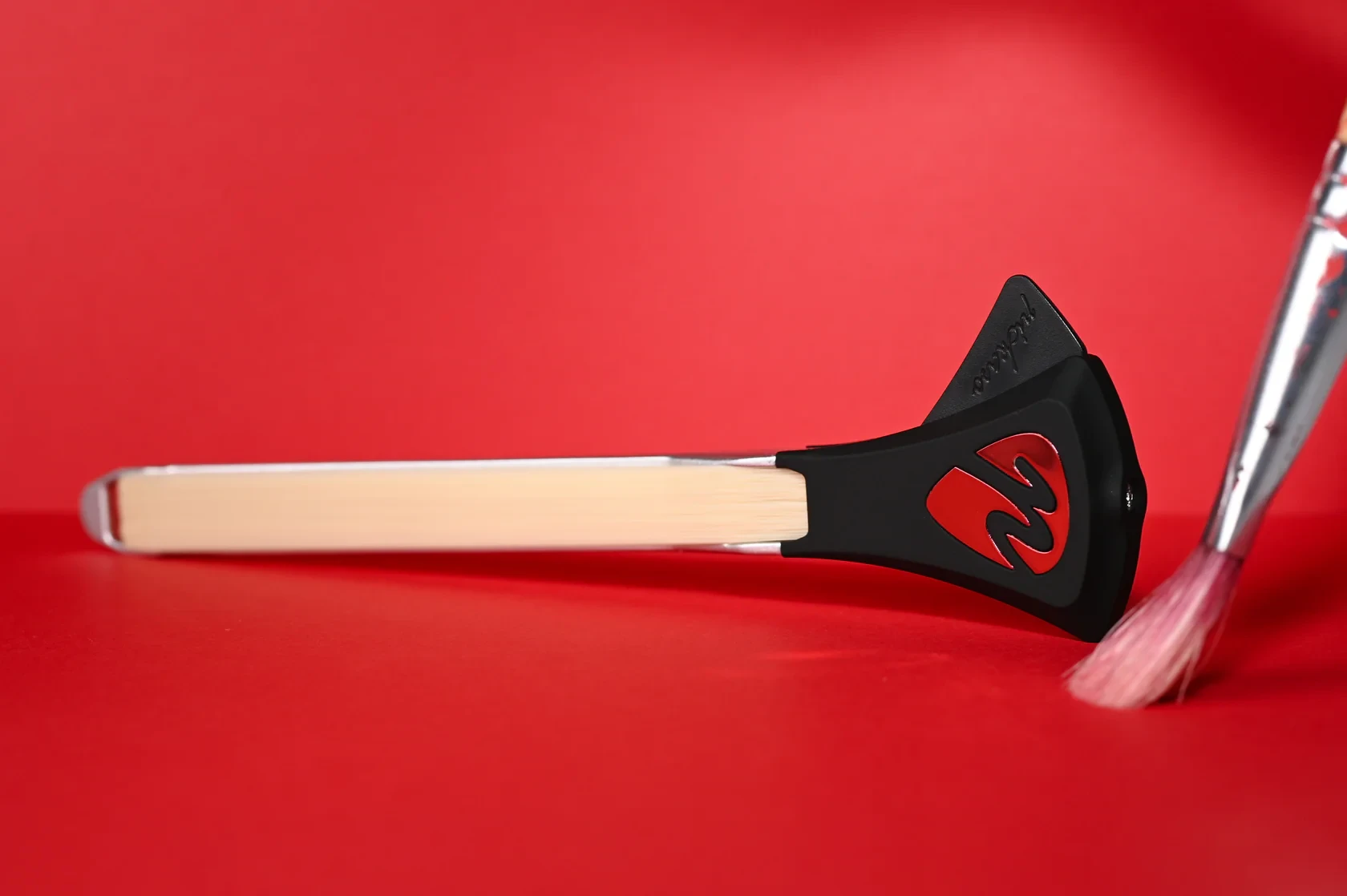


Pickaso Guitar Bow - Classical Model
Approx $41.39 USD
The Classical Model.
Launched in 2019, this model is where it all started. It is known for its iconic sweet sounds that shine on the higher strings but are deep
enough on the lower ones!
Features:
-
Compact: With a hair length of 10cm and a total length of 16cm, the classical models offer a compact structure and are
easy to handle.
Built-in pick: A pick is seamlessly attached to the handle, enhancing both playability and versatility. - Sound: Specifically designed to emphasize mid-high tones, it delivers a crisp and sweet sound.
Our Unique Design.
We gathered musicians, designers, and engineers to create a top-notch product that sounds amazing and looks great, using the best materials available. It features:
- Ultra-Thin, Anodized Aluminum Body
- High-Quality Plastic Handle: Covered with a smooth rubber finish.
- Unique Synthetic Bow Hair: Developed in our labs specifically for guitars. No horses or animal hair. (Vegan 🌱)
- Built-in Pick
- Replaceable Parts: All parts are replaceable.
- Three Colors Available
❤️ Each bow is handcrafted with love and carefully inspected before leaving our workshop.
📣 Important Notice: The Pickaso bow is not compatible with coated strings like Elixir Nanoweb
or nylon strings.
What Is Rosin and Why Is It Essential?
Discover Our Premium Rosin
Rosin, a solid resin extracted from trees, plays a vital role in producing sound through friction between the bow and guitar strings. Every
bowed instrument depends on rosin for sound production. At Pickaso, we've crafted the perfect rosin for guitarists:
- Vacuum-Sealed: Ensures maximum freshness.
- Low Dust Residue: Minimizes dust by 85% for a cleaner playing experience.
- Enriched with natural waxes: Provides the perfect balance between a soft sound and high grip. Not too punchy, not too soft.
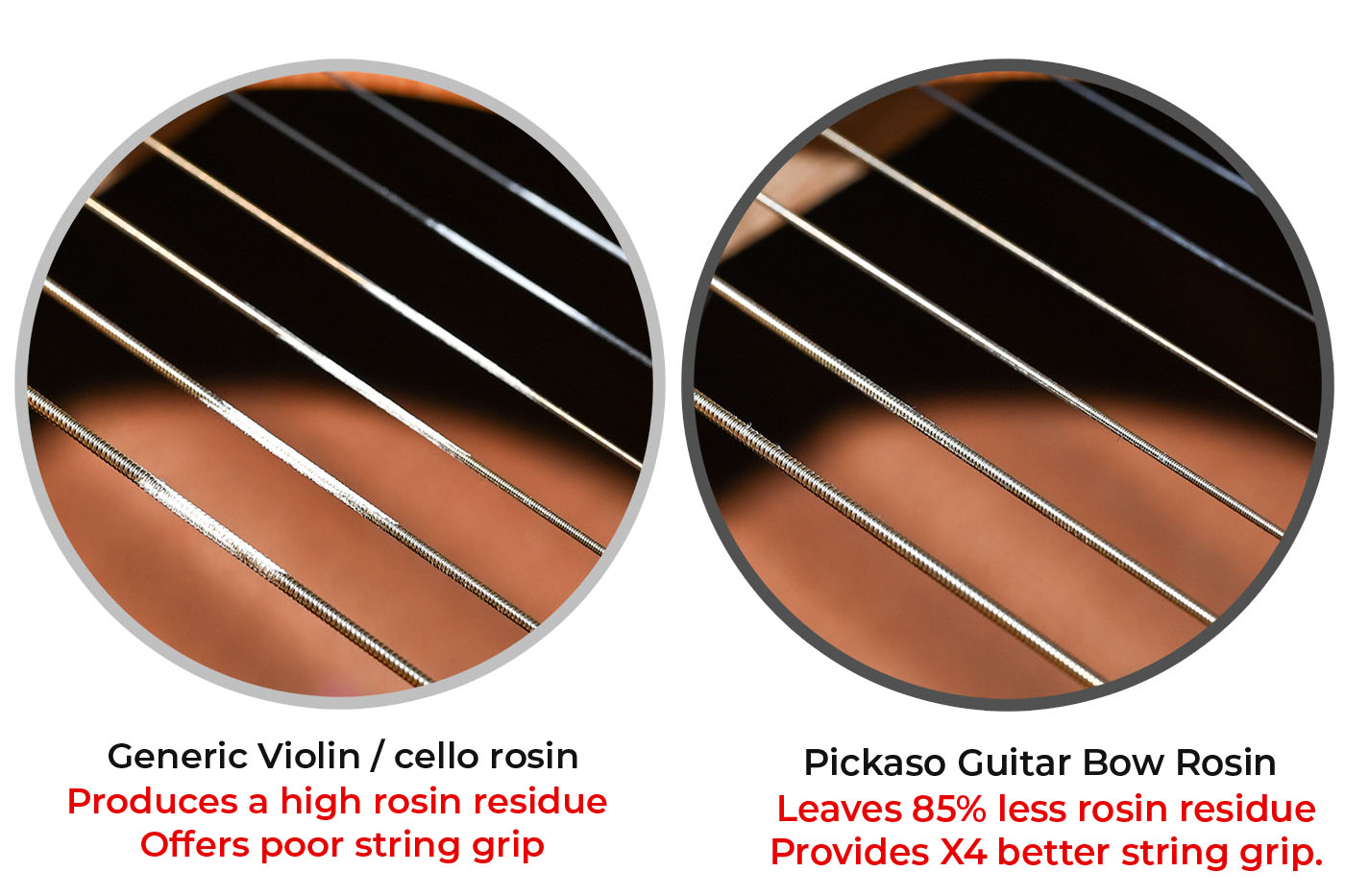
Pickaso Guitar Bow (Classical Model) – Ultimate Guide & Review
Introduction
The Pickaso Guitar Bow – Classical Model is a revolutionary guitar accessory that allows guitarists to play their
instrument with a bow, much like a violin or cello. This comprehensive guide explores the evolution of bowed guitar techniques, details the
features and benefits of the Pickaso Guitar Bow, and examines its applications across various genres. We’ll also compare it to other guitar
bows and accessories, discuss maintenance and storage, consider buying tips, review user experiences, and highlight current trends in bowed
guitar playing. By the end, you’ll understand why this innovative tool is expanding the creative horizons of guitarists worldwide.
Evolution of Bowed Guitar Playing Techniques
Long before the Pickaso Bow was invented, adventurous guitarists were experimenting with bows to unlock new sounds. In the 1960s, Eddie Phillips of the British band The Creation was one of the first rock guitarists to use a violin bow on guitar (heard on their 1966 song “Making Time”). A few years later, Jimmy Page of Led Zeppelin famously popularized the bowed guitar technique – his live performances of “Dazed and Confused” and other songs featured dramatic bow solos on electric guitar. At times, Page’s use of a violin bow produced eerie, sustaining sounds that were unlike anything guitarists had heard before. This sparked curiosity and showed that a standard guitar could mimic orchestral instruments with the right technique.
Throughout the 1970s and beyond, the idea of bowing a guitar remained a niche but intriguing technique. Rock and experimental guitarists would occasionally rosinate a regular violin bow and draw it across electric guitar strings to achieve sustained, singing notes. However, using a traditional bow on guitar came with challenges: guitars have a relatively flat bridge and closely spaced strings, making it difficult to bow individual strings cleanly. Players like Page managed by tilting the guitar or bow, but it was not easy to control. Despite this, the allure of unique textures kept the practice alive in various forms.
By the 1990s, the bowed guitar saw a resurgence in post-rock and ambient music. Jónsi, guitarist/vocalist of the Icelandic band Sigur Rós, began using a cello bow on his electric guitar to create the band’s signature ethereal soundscapes. His technique – slowly bowing an electric guitar for long, swelling tones drenched in reverb – inspired many indie and ambient musicians to explore bowed guitar for its haunting, violin-like timbres. Other artists, like Radiohead’s Jonny Greenwood, have used a bow in select songs (“Burn the Witch,” “Pyramid Song”) to produce whale-like cries and other unique effects. Clearly, the concept of bowed guitar playing had evolved from a rock stage gimmick into a legitimate technique across genres, from psychedelic rock to modern experimental music.
Despite these famous examples, for decades there was no dedicated tool designed for bowing a guitar – musicians simply repurposed violin or cello bows. That changed in 2019 with the introduction of the Pickaso Guitar Bow, the first bow developed specifically for guitar. The Pickaso Bow’s invention represents the next step in the evolution of bowed guitar, addressing the limitations of traditional bows and making the technique more accessible to everyday guitarists. Before diving into its features, it’s worth noting another parallel innovation: the EBow (Electronic Bow). Introduced in the 1970s, the EBow is a hand-held electronic device that uses a magnetic field to vibrate guitar strings, producing infinite sustain reminiscent of a bowed sound. The EBow became popular especially among electric guitarists for creating violin-like tones without a physical bow. However, it differs significantly from the Pickaso approach, as we’ll discuss later.
In summary, the idea of bowing a guitar has a rich history – from pioneers like Eddie Phillips and Jimmy Page, through ambient artists like Jónsi, to modern innovators. The stage was set for a purpose-built solution, and the Pickaso Guitar Bow emerged to fill that role, bringing bowed guitar techniques from the fringes into the mainstream toolkit of guitar accessories.
The Pickaso Guitar Bow – Classical Model: Features & Benefits
The Pickaso Guitar Bow (Classical Model) is a groundbreaking accessory that reinvents how guitarists can produce sound. Launched in 2019 by inventor Jonathan Shenhav, this was the original model that introduced the world to a bow designed specifically for acoustic guitars. It quickly gained attention for its clever design and the unique sonic possibilities it unlocks. Below, we break down the key features and benefits of the Classical Model:
-
Dual-Sided Bow Hair: Unlike a traditional violin bow, the Pickaso Bow has bow hair on both sides of the
stick. This unique dual-hair design means you can bow in both directions (down-bow and up-bow) smoothly without having to rotate or
reposition the bow. It provides continuous playability, allowing for fluid, sustained notes whether you move the bow
forward or backward. This is a core innovation that makes it much easier to bow on a guitar’s flat string plane.
- Compact Size & Guitar-Friendly Shape: The Classical Model is short and compact, measuring about 16 cm (6.3 inches) in length with a 10 cm hair . This smaller form-factor is purpose-built to fit within an acoustic guitar’s soundhole area and between the strings and body. Traditional violin bows are much longer and can be unwieldy for guitar; by contrast, the Pickaso Bow’s slim, lightweight aluminum body (with a smooth rubberized handle) is easy to maneuver in tight space. Its shape allows guitarists to insert and move the bow in the soundhole or between strings without hitting the guitar body, effectively bowing individual or multiple strings on an acoustic guitar
-
Built-in Pick on the Handle: A particularly clever feature is the integrated guitar pick attached to the
bow’s handle. This means the guitarist can quickly switch between bowing and picking/plucking the strings without needing to put the bow
down. For example, you might strum a chord normally, then immediately use the bow (held in the same hand) to draw out a sustained note –
the transition is seamless. The built-in pick enhances versatility, allowing combinations of plucked and bowed passages
in one performance. It’s a small addition that yields big creative benefits, effectively giving you two tools in one.
-
Specialized Synthetic Bow Hair: Pickaso uses a unique synthetic fiber for the bow hair, developed
specifically for use on guitar strings.
Traditional bows use horsehair, but the Pickaso Bow’s vegan-friendly fibers are engineered to interact optimally with metal guitar strings.
This synthetic hair provides consistent friction and durability on steel strings, producing a clear sound. It also means no animals
were harmed
in making the product. (Notably, some imitation products have used real horsehair, but Pickaso chose synthetic to achieve the right
balance of grip and longevity on guitar strings.)
-
High-Quality Materials & Build: The bow stick is made from ultra-thin anodized aluminum, giving it
strength without excess weight. The handle is a high-quality plastic with a soft rubber coating for comfortable grip. This construction
ensures the bow is sturdy enough for vigorous use but light enough for delicate control. Each Pickaso Bow is handcrafted and
carefully inspected
before shipping, reflecting a level of craftsmanship appreciated by users (as evidenced by positive reviews). The overall feel is of a
well-balanced, durable tool built for musicians.
-
Replaceable Parts & Accessories: Recognizing that wear and tear happen, the maker designed all parts of the bow to be replaceable.
The hair, for instance, can be replaced if it eventually wears out (just as one would re-hair a violin bow). This extendability adds to the
product’s longevity. Additionally, each bow comes with useful accessories: a protective case, premium rosin,
a microfiber cleaning cloth, stickers, and even a personal letter from the inventor in the package.
The included rosin (made in the UK with a special low-dust formula) is vacuum-sealed for freshness and formulated for
optimal friction on guitar strings.
All these extras ensure the player has everything needed to get started and maintain the bow.
An acoustic guitarist using the Pickaso Guitar
Bow (Classical Model). The bow’s compact design fits into the guitar’s soundhole area, allowing the player to bow individual strings with
ease. Note the built-in pick at the end of the handle, which enables quick transitions between bowing and picking.
Benefits in Sound & Playability: The combination of these features results in a tool that greatly expands a guitar’s expressive capabilities. With the Pickaso Bow, an acoustic guitar can produce sustained, violin-like tones that were previously impossible to achieve continuously by picking alone. You can hold a note and make it swell or fade like a cello, or play long melodic lines without the notes decaying quickly. The bow emphasizes the mid-high tones on the Classical Model, yielding a sweet, bright sound on steel strings. At the same time, it can draw a sufficiently warm tone from lower strings, giving a satisfying depth on wound strings. This model’s compactness makes it easy for beginners to handle – it’s forgiving and not cumbersome, so guitarists can focus on technique and musicality rather than struggling with a large bow.
Another benefit is how the Pickaso technique addresses the historical challenge of bowing on guitar. As noted, guitars have a flatter fretboard radius and closely spaced strings, which made bowing awkward with standard bows. The Pickaso Bow’s slim dual-haired design directly tackles this: it allows players to move the bow within the guitar’s soundhole area to target one string at a time (or two adjacent strings for double stops) with much greater control. Players can even achieve bowed chords or intervals by bowing two strings simultaneously – something extremely tricky with a violin bow on a flat six-string guitar, but more feasible with Pickaso’s design. This effectively expands the guitar’s expressive range, letting players sustain multiple notes and create chordal string-pad effects, which is a huge benefit for solo performers and composers seeking richer textures
In summary, the Classical Model of the Pickaso Guitar Bow offers a well-thought-out set of features tailored for acoustic guitarists. Its advantages include the ability to produce novel sounds (mimicking bowed instruments), improved playability via innovative design (dual-sided hair, built-in pick, ergonomic size), and solid construction with replaceable components. These features and benefits make it an appealing accessory for any guitarist looking to push the boundaries of their instrument and explore unique sound creation and innovative playing techniques.
Applications in Different Music Genres and Techniques
One of the most exciting aspects of the Pickaso Guitar Bow is how it opens up new possibilities across a wide range of music genres and playing styles. By enabling sustained, bowed tones on a guitar, it invites guitarists from various backgrounds to experiment with fresh techniques. Let’s explore how the bow can be applied in different genres and the techniques involved:
Rock and Psychedelic Music
Bowed guitar has a firm legacy in rock music thanks to pioneers like Jimmy Page. With the Pickaso Bow, rock guitarists can easily recreate and expand upon those classic sounds. For instance, in a psychedelic rock or prog-rock context, a guitarist might use the bow to create droning soundscapes behind a song, similar to the moody violin-esque sections in Led Zeppelin’s “Dazed and Confused”. The bow can be drawn across the low strings to produce a dark, moaning drone, or on the high strings for piercing, siren-like wails. Feedback loops can also be introduced: on electric guitar (though the bow is designed for acoustic, it can be experimented with on electrics that have some clearance), a bowing motion near pickups can induce controlled feedback, yielding sustain and overtones that rock guitarists love. Essentially, the bow lets rock players sustain notes indefinitely, much like using an overdriven amp or effects, but with a very organic, physical control. This can be particularly useful in solos or dramatic intros/outros – imagine bowing a high note and bending it with the left hand, the sound crying out and sustaining as long as you keep bowing. Such techniques add an intense, expressive layer to rock music performances.
Beyond just long notes, rock guitarists can use rhythmic bowing for texture. By quickly pulsating the bow back and forth, you can create tremolo effects on a single note (akin to a violin tremolo) which could be intriguing in a rock ballad or atmospheric section. In heavier styles, say post-rock or shoegaze, running the bowed guitar through delay and reverb pedals yields huge, washy walls of sound that can replace or complement synthesizer pads. For example, a post-rock guitarist might bow an open string while slowly modulating the tone with volume pedals or effects, constructing an ambient backdrop for the band. This technique is directly inspired by players like Jónsi of Sigur Rós, who often builds entire song intros with bowed guitar ambience. With the Pickaso Bow, such techniques are more accessible on acoustic guitar, which can then be mic’d or amplified.
Ambient, Folk and Experimental Genres
In ambient and experimental music, the Pickaso Bow truly shines as a tool for unique sound creation. Acoustic guitarists in these genres can use the bow to produce sounds reminiscent of a cello or viola, adding a new voice to their arrangements. For instance, a solo folk artist might layer a bowed guitar passage under a fingerpicked section to create a string section effect – effectively turning one guitar into melody, harmony, and “string accompaniment” all by themselves. The sustain from the bow allows notes to overlap and bleed into each other, which is perfect for creating atmospheric drones or pads behind a song.
Fingerstyle and percussive guitar players are also finding creative ways to integrate the bow. One might play a harmonic on the guitar (touching a string lightly to get a bell-like note) and then bow that harmonic, resulting in a pure, flute-like tone that rings out. Or consider drone folk and modal music: you can tune the guitar to an open chord and continuously bow one string as a drone while plucking others – similar to how a hurdy-gurdy works. This yields an enchanting, ancient-sounding resonance ideal for folk or world music textures.
In experimental and avant-garde contexts, the bow can be used unconventionally. Guitarists have begun bowing not just the strings, but also behind the bridge or on unconventional parts of the guitar to elicit strange overtones (much like experimental violinists do). The Pickaso’s small size allows these odd approaches – you could insert it between the guitar’s soundhole and the strings or even try bowing two strings at once to play an interval continuously (e.g., sustaining a perfect fifth drone). Composers and sound designers might utilize the bow for film scoring or theater music, where an acoustic guitar can now serve as a surrogate violin/cello in a pinch, delivering emotive swells and eerie sustains when needed.
Another technique enabled by the bow is crescendo and decrescendo on a single note, which is nearly impossible by picking alone. By controlling bow pressure and speed, a guitarist can make a note gradually grow louder (crescendo) or fade away (diminuendo) with great expressive control. This dynamic shaping is valuable in genres like classical crossover or ambient improvisation, where nuance and expression are key. A guitarist could, for example, sustain a chord by bowing different strings sequentially and gently increase the force to swell the overall sound, creating a blooming effect that fills the room – a technique that might remind listeners of a string quartet’s rising swell.
Classical and Orchestral Applications
Although the Classical Model bow is named for being the original Pickaso design, one might indeed apply it in classical music contexts. Guitarists who play in classical ensembles or duos can use the bow to mimic the sound of orchestral string instruments for certain pieces. For instance, a piece written for guitar and violin could conceivably be performed by two guitars if one guitarist uses the Pickaso Bow to handle the sustained violin lines. While a standard classical (nylon-string) guitar won’t work with the bow (nylon strings don’t respond well, as noted later), one could use a steel-string guitar in a classical piece arrangement to achieve this effect. It’s a novel approach that could broaden repertoire possibilities.
Composers are also starting to write new music specifically for bowed guitar. The so-called “Pickaso technique” has been recognized for allowing bowing in the soundhole area to effectively reach individual strings on an acoustic. We may soon see etudes or compositions that call for a guitarist to alternate between pizzicato (plucked notes) and arco (bowed notes) within the same piece. Imagine a composition where a guitarist holds a sustained open-string drone with the bow in one hand while simultaneously fingerpicking a melody on the other strings – effectively playing lead and accompaniment together. This kind of polyphonic texture could be very intriguing in contemporary classical guitar music or jazz fusion contexts.
Modern Band and Live Performance Uses
In a band setting, whether it’s an indie rock band or an acoustic trio, the Pickaso Bow can serve as a secret weapon for unique live sounds. Guitarists can bring it out for specific songs or sections to wow the audience with an unexpected violin-cello sound coming from an acoustic guitar. For example, an acoustic band covering a song that originally has a violin part can use the bow to cover that part live. The audience hears those familiar sustained notes but sees only guitars on stage – it’s a crowd-pleasing surprise. Many users report that it “turns heads” during performances because people are not used to seeing a guitar played this way.
Technically, using the bow live might involve a quick change (picking it up mid-song), but thanks to the built-in pick, some performers actually hold the Pickaso Bow while strumming so they can fluidly switch. One approach is to grip the bow in the hand along with a regular pick for the first part of a song, then after a strummed chorus, transition to bowing a verse without pause. It requires a bit of practice, but the design enables it. This means you don’t necessarily have to stop the music to start bowing – it can be integrated in the flow of a live arrangement.
Moreover, bowed guitar sounds mix beautifully with looping pedals. Solo performers can record a loop of a bowed drone or a bowed riff, then play over it. Because the bow can create long legato phrases, it avoids the choppy, percussive nature of normal guitar loops and instead provides a smooth backdrop. Artists are using this to layer multiple bowed loops (maybe different chords or harmonies), building a one-person string ensemble on the fly. The technique is limited only by imagination – some might even loop a percussive beat (by tapping the guitar), then loop a bowed bassline, then play a melody on top, effectively turning the guitar into an entire band.
In summary, across genres like rock, ambient, folk, classical, and experimental music, the Pickaso Guitar Bow is enabling guitarists to explore innovative techniques. Whether it’s creating immersive drones, sustaining melody lines like a violin, adding orchestral depth to acoustic sets, or inventing new composite styles of playing, the applications are vast. The guitar, already one of the most versatile instruments, is pushed even further by the bow – bridging the gap between traditional strummed guitar sounds and the expressive, sustained voice of bowed string instruments.
Comparisons with Other Guitar Bows and Alternative Accessories
Whenever a new tool comes along, it’s natural to compare it to existing solutions. In the case of the Pickaso Guitar Bow, the two main points of comparison are traditional violin bows (or other guitar bows) and alternative sustain devices like the EBow. Let’s examine how the Pickaso Bow (Classical Model) stacks up against these alternatives, and what unique advantages or disadvantages it has.
Versus Traditional Violin/Cello Bows
Before dedicated guitar bows were available, players like Jimmy Page simply used a regular violin bow on their guitars. While this can work (especially on electric guitars with some setup adjustments), it is far from ideal for a few reasons. Violin bows are long (around 29 inches) and are designed to be used at a different angle and technique than what a guitar requires. Using such a bow on a guitar can be cumbersome – the bow tends to collide with the guitar’s body or other strings. Additionally, as noted earlier, the flat fingerboard and closely spaced strings of a guitar make it hard for a violin bow (with hair on one side) to isolate individual strings without hitting neighboring strings. Violin and cello bows are intended for instruments with a curved bridge that separates the strings for bowing; guitars lack that curvature, so a violin bow often ends up inadvertently bowing multiple strings at once or scratching the guitar top.
The Pickaso Guitar Bow was specifically designed to overcome these issues. Its short length and dual-sided hair allow guitarists to maneuver within the tighter confines of a guitar’s string layoute. You can bow a single guitar string cleanly, which a standard bow struggles with, and you can even intentionally bow two at once (e.g., to play an interval) with some practice – something nearly impossible with a regular bow on guitar. Furthermore, the Pickaso Bow’s built-in pick and ergonomic handle give it functionality that a classical bow doesn’t have (you certainly can’t strum with a violin bow, but you can with a Pickaso by using the attached pick). In terms of materials, classical bows use horsehair that must be rosined to grip the strings; the Pickaso’s synthetic hair similarly needs rosin, but it’s formulated for guitar strings specifically and avoids some pitfalls like excessive dust. Traditional rosin can leave a lot of powder and can gum up guitar strings; Pickaso’s low-dust rosin keeps things cleaner
It’s also worth noting the maintenance difference: violin bows have a frog and tension screw to loosen/tighten hair; the Pickaso Bow does not require tension adjustment (its hair is set at optimal tension out of the box). This means less fuss for the user – you don’t have to loosen the hair after each use as violinists do. Some advanced violin bow techniques (like bouncing the bow or heavy spiccato) aren’t really applicable on guitar, so losing the tension adjustment isn’t an issue; the bow is always ready to go with consistent tension.
Another type of “other guitar bow” to consider is the few imitation products or DIY bows that have appeared. For instance, not long after Pickaso’s release, some inexpensive copies popped up online (sometimes dubbed “guitar bow” with various brand names. These often mirror the dual-sided design but may use cheaper materials (one Amazon-listed version uses aluminum and ABS like Pickaso, but actual horsehair for the bow that they mention as “real horsetail material”). While they might produce a similar effect, users have reported that the build quality and performance aren’t on par – for example, horsehair can break or need rosin more frequently, and the finish might not be as smooth, leading to scratching. The Pickaso Bow’s lab-developed synthetic hair and meticulous build give it a durability and reliability edge (plus the support of replaceable parts and customer service). Essentially, you get what you pay for – the genuine Pickaso is a musician-grade tool, whereas knockoffs are often toy-like in comparison.
In summary, compared to using a traditional bow on guitar, the Pickaso Guitar Bow is far more practical and effective. It was engineered for the guitar’s geometry, making bowed guitar techniques feasible for ordinary players (not just rock stars on stage with special setups). It also integrates picking ability and easy handling, which you simply don’t get with a regular bow. The result is a more versatile and user-friendly experience for creating bowed sounds on guitar.
Versus the EBow (Electronic Bow)
The EBow is another solution to achieving sustained, bowed-like notes on a guitar, but it takes a completely different approach. The EBow is a small handheld electronic device that, when held over a guitar string, uses an electromagnetic feedback loop to vibrate that string continuously In effect, it “bows” the string with a magnetic field, requiring no physical contact (you hold it just above the string). The EBow has been popular among electric guitarists since its introduction in the late 1970s, especially in genres like progressive rock, ambient, and experimental music, due to its ability to create infinite sustain and even simulate violin or synth-like tones.
Comparing EBow to Pickaso Bow is interesting because they achieve similar goals (sustained guitar notes) through totally different means. Sound and Tone: The EBow produces a very pure, smooth sustain. Notes played with an EBow have a smooth attack (you don’t hear a pick attack at all) and can swell in as the EBow’s effect kicks in. This is somewhat analogous to a bow, but many would say the EBow’s sound is a bit different – it can sound like an electric guitar holding a note with volume swell, or even like an electronic synthesizer at times. The Pickaso Bow, on the other hand, produces sound via actual friction of bow hair on string, leading to a more acoustic, organic bowed-string timbre. You will hear the texture of the bow on the string, especially on acoustic guitar: a bit of scratch or bite if you attack hard, and a warm resonance as the note sustains. It’s essentially making the guitar sound like a true bowed instrument (violin/viola), complete with the nuanced control of dynamics by bow pressure. In contrast, the EBow’s magnetic sustain has a consistent pressure – you can’t mimic the exact swelling or expressive bow strokes, although you can control volume by moving it closer or farther from the pickup.
Polyphony: The EBow famously only affects one string at a time It’s essentially monophonic – you can move it from string to string to play melodies or arpeggios, but you cannot sustain multiple strings simultaneously with one EBow. (Some players use two EBows at once to sustain two strings, but that’s a rare stunt!) The Pickaso Bow can sustain multiple strings (double stops) together, and with practice one could alternate between bowing different strings in quick succession to outline chords (a technique string players call arpeggiation, akin to what an EBow user might do but mechanically with the bow). If you want to drone one string while playing a melody on another, Pickaso allows that in a very visual, tactile way – you literally bow the open string continuously while picking the melody on another string. With EBow, you’d need two guitars or some alternate method to get two notes ringing like that. So for polyphonic textures, the Pickaso Bow has an advantage.
Instrument Type: The EBow is mostly used on electric guitars (or amplified acoustics) because it relies on the pickups and steel strings. It actually works best when the electric guitar’s pickup is on, as it uses the pickup’s magnetic field in its circuit. On pure acoustic guitar (unamplified), an EBow would do very little (unless you have a soundhole pickup and even then it’s tricky). The Pickaso Bow is explicitly made for acoustic (steel-string) guitars and acoustic bass guitars. It uses the acoustic instrument’s own sound-producing capabilities (the body resonance). You don’t need any electronics or amplification (though you can amplify an acoustic of course). This means the Pickaso is ideal for acoustic performers who want that bowed effect live without plugging in, whereas an EBow would require an electric or an amplified setup. Conversely, the EBow can be used on electric guitars without any acoustic sound – great for studio work with effects. The Pickaso can also be used on electrics in certain situations (for example, on an electric guitar with sufficient action or perhaps on an electric violin or other instrument), but its forte is acoustic. So the choice might depend on whether you’re typically playing acoustic or electric.
Ease of Use: Both devices have a learning curve, but of different kinds. The EBow requires finding the “sweet spot” above the pickup and string to get the sustain going, and you must learn to move it smoothly for changing strings. The Pickaso Bow requires learning a bowing motion and coordinating with fretting hand, and proper rosin application. Many guitarists already know how to use a pick, but using a bow is new; however, string players might find it quite natural. Overall, the physicality of the Pickaso Bow can be more engaging – you feel the string’s resistance and can literally draw out the sound. With the EBow, it’s more like holding a device steady and letting it do the work, which can feel a bit abstract but is very effective for sustain.
One user-friendly advantage of the Pickaso is that it doesn’t require batteries or electronics – it’s always ready to go (provided you rosin it). The EBow needs a 9V battery and can run out of power at an inconvenient time if you’re not careful. Also, EBows are primarily designed for electric guitar width; on a wider-neck acoustic, positioning might be awkward. The Pickaso Bow was built for standard acoustic guitar dimensions, so it’s a custom fit solution.
Versatility: The EBow is somewhat a one-trick pony (albeit a very good trick): it sustains strings for days. The Pickaso Bow, while also a specialized tool, offers more varied articulations – you can do short bowed staccato notes, longer legato, dynamic swells, etc. It introduces an entirely new technique to guitar playing (some call it the “Pickaso technique” nowen.wikipedia.org) which can be explored and varied. The EBow doesn’t change technique so much as it is an effect or gadget you use in place of a pick. Many musicians might even consider using both in different contexts; for example, use the Pickaso Bow for acoustic songs or where you want visual performance and true bowed sound, and use an EBow in the studio on your electric guitar for certain sustain effects.
In summary, the Pickaso Bow vs EBow debate is not about which is better universally, but which suits a player’s needs. The Pickaso Bow delivers an authentic bowed string experience on guitar, allowing expressive control and multi-string possibilities, especially on acoustic instruments. The EBow offers infinite electric sustain with ease and a different sonic character, but is limited to one string and lacks the visual/mechanical bow interaction. For an acoustic guitarist seeking orchestral sounds, Pickaso is the clear choice. For an electric guitarist seeking ambient drones with minimal effort, an EBow might be simpler. Some adventurous guitarists will undoubtedly use both – each to its strengths – expanding their sonic arsenal considerably.
A guitarist using an EBow
(electronic bow) on an electric guitar. The EBow creates infinite sustain by magnetically vibrating the stringen.wikipedia.org.
It produces a smooth, single-string sound similar to a bowed note, but the Pickaso Guitar Bow offers a more hands-on, multi-string approach
to sustained tones.
Other Sustaining Devices and Bows
For completeness, it’s worth mentioning a couple of other alternatives in brief. There have been devices like the Gizmotron (a mechanical bowing machine from the 1970s) and modern sustain pickups like the Fernandes Sustainer or Sustainiac (built-in pickups that sustain strings via electromagnetism). These, like the EBow, aim to give guitars the ability to hold notes. The Gizmotron could bow multiple strings with little wheels, but it was notoriously finicky and is very rare today. Sustainer pickups are great for infinite sustain on electric guitars, but again they work on all or one string at a time and are part of the guitar’s electronics permanently. The Pickaso Bow is unique in that it is an external, portable accessory that can be applied to any compatible guitar and removed at will, while providing a truly bowed sound.
There are also some niche “guitar bows” that predate Pickaso conceptually (for example, homemade bows, or something called the “Piranha Guitar Bow” mentioned on forums, which might have been a small bow device). None gained much traction – likely because they did not combine all the successful elements that Pickaso has now (dual hair, good materials, etc.). So at present, the Pickaso Bow stands out as the leading dedicated guitar bow on the market.
In conclusion, when comparing to alternatives: Pickaso Guitar Bow vs. Traditional Bows – Pickaso wins for guitar use due to its specialized design. Pickaso vs. EBow – Pickaso offers a more organic and versatile bowing experience (especially for acoustics), whereas EBow remains a powerful sustain tool mainly for electrics; many players will choose based on context, if not incorporate both. And against any knock-offs or earlier attempts, the Pickaso Bow’s quality and well-thought-out features justify its place as a must-have for those looking to seriously explore bowed guitar techniques.
Maintenance and Storage Guidelines
Owning a Pickaso Guitar Bow is relatively low-maintenance, but like any musical tool (especially one involving friction and resin), it benefits from proper care to ensure longevity and optimal performance. Here are some guidelines on maintenance and storage for your guitar bow:
-
Rosin Application: Just as with violin bows, regularly applying rosin to the bow hair is essential for producing sound. If
the bow produces weak or faint sound, it usually means you need more rosin
– the friction isn’t sufficient without itpickasobow.compickasobow.com.
Pickaso provides a quality rosin in the kit. To apply, gently rub the rosin cake along the bow hair a few times before each playing session.
Initially, a new bow may need quite a few swipes of rosin to “prime” the hair. You’ll know you have enough rosin when the bow consistently
grips the string and creates a full tone.
-
Rosin Maintenance: Over time, the surface of the rosin cake can become smooth and less effective. It’s recommended to scratch
the top of the rosin cake with fine sandpaper occasionally
to create a bit of powdery texturepickasobow.com.
As the user guide notes, if rosin no longer adheres well, lightly roughing up that surface will help it deposit on the bow hair again.
Generally, you don’t need to sand the rosin before every use – just when you notice the bow hair isn’t picking up rosin like it used topickasobow.compickasobow.com.
Also, remember that rosin dust can accumulate on the strings and guitar top. After playing, it’s a good habit to wipe down the
strings and guitar surface
with the provided microfiber cloth to remove any rosin residue. This prevents buildup which could affect string vibration or mar the
guitar’s finish over time.
-
Cleaning the Bow Hair: Unlike guitar strings, the bow hair doesn’t need frequent cleaning. In fact, routine
cleaning of the bow hair isn’t necessary unless it becomes oily or dirtypickasobow.com.
Natural oils from your fingers or sweat can sometimes get onto the hair (try to avoid touching the hair directly for this reason). If you do
find the hair has gotten greasy or grimy – evidenced by slipping on the strings or uneven sound even with rosin – you have a couple of
options. For minor cleaning, using a paper towel moistened with pure alcohol (e.g., isopropyl alcohol) to gently wipe the
hair can help remove oilspickasobow.compickasobow.com.
Make sure to let it dry thoroughly, then reapply rosin because alcohol will strip off all rosin. For a more thorough clean (in more extreme
cases of dirt), you can wash the hair with lukewarm water and a tiny bit of mild soap, then rinse and dry – but this is rarely needed.
Always avoid getting the bow’s wooden or aluminum parts wet; focus only on the hair if washing. The user guide emphasizes
to only undertake hair cleaning after watching their instruction video, meaning it should be done carefully and not as a routine taskpickasobow.com.
Generally, if you keep the hair rosined and handle it by the stick (not touching the hair with fingers), it will stay clean.
-
Hair Tension: The Classical Model’s hair tension is fixed. Some newer versions or the mentioned “Plus Models” have an
adjustment mechanism for hair tensionpickasobow.com,
but for the Classical Model you don’t have to worry about tightening or loosening anything – it’s set optimally at the factory. If your bow
hair ever feels very loose or too tight due to environmental changes (excess humidity can loosen bow hair, extreme dryness can tighten it),
it might be worth contacting the manufacturer. But in normal conditions, you should find it remains at a good tension. One tip from the user
manual for adjustable models is that it’s normal if a few hair fibers are slightly looser than the rest when tensionedpickasobow.com
– that doesn’t usually affect performance. If a hair strand breaks (it can happen occasionally, just like on violin bows), carefully snip it
off near each end or pull it out gently – do not yank a broken strand as it could pull out more. Since all parts are replaceablepickasobow.com,
you can consider getting the hair replaced by the company if many hairs break over time, though with proper use this is rare.
-
String Compatibility: This is more of a usage guideline than maintenance, but it’s crucial: ensure you use uncoated
steel strings for best resultspickasobow.comguitarcenter.com.
The manufacturer explicitly notes that coated strings (such as Elixir Nanoweb coated strings) or nylon classical strings do not work well
with the bow – the coating prevents the hair from grabbing the string, resulting in almost no soundpickasobow.comguitarcenter.com.
So, if you normally use coated strings for longevity, be aware you might need to switch to regular (uncoated) bronze or phosphor bronze
strings on the guitar you plan to use the bow with. This is a consideration for maintenance because if you inadvertently try to use the bow
on a coated string set, you’ll strain to get any sound and might wonder if something’s wrong with the bow. The fix is simple: change to
uncoated strings (the Pickaso team even suggests adding a set of uncoated strings to your purchase if you’re unsurepickasobow.com).
Also, fresh strings tend to respond better than very old, dirty strings. If your guitar strings are dead or grimy, both
picking and bowing will suffer. So keep your strings in good condition; change them as you normally would for best tone.
-
Protective Storage: The Pickaso Bow comes with a soft protective case (and there’s an optional hard-shell
case upgrade)pickasobow.com.
It’s advisable to store the bow in its case when not in use. This protects the bow hair from getting snagged or accumulating dust, and
shields the bow from accidental damage. The bow hair doesn’t need to be loosened (no frog screw as mentioned), so you simply place it in the
case as-is. If you have the hard case, even better for travel – it can hold the bow, rosin, and perhaps the cloth. Keep the bow away from
extreme heat (don’t leave it in a hot car or near a radiator) as high temperatures could potentially affect the hair or warp any plastic
components. Similarly, avoid extreme cold or humidity swings when possible, as these conditions can affect any instrument accessory over
time.
-
During Performance or Breaks: If you’re in the middle of a practice or performance and need to put the bow down for a
moment (say you switch back to regular pick playing for a few songs), place it somewhere safe. Laying it on a flat surface is okay, but
ensure the hair isn’t picking up dirt. A good trick is to keep it in the case or stand it upright in a secure spot where it won’t roll off.
Because the bow is small, it can be easy to misplace – develop a habit of keeping it in a specific spot when not in hand.
-
General Handling: Treat the bow almost like you’d treat a harmonica or a delicate accessory – it’s robust, but you wouldn’t
want to throw it around. The aluminum body can dent if struck hard, and the hair can get tangled or dirty if not respected. Avoid touching
the hair with your fingers (to keep oils off). If children are around, best not to let them play with it unsupervised, as it’s a musical
tool, not a toy (despite some thinking it looks like a cool gadget!).
By following these maintenance and storage guidelines, your Pickaso Guitar Bow will remain in top shape. Users who consistently care for their bow report that it continues to perform excellently even after hundreds of hours of use, only requiring occasional rosin and minimal upkeep. In fact, one of the advantages of this accessory is that maintenance is pretty straightforward – there are no complex moving parts to service regularly. With good care, you can rely on your guitar bow to deliver those sweet sustained notes and unique sounds for a long time.
Buying Considerations and User Reviews
If you’re intrigued by the Pickaso Guitar Bow, here are some key considerations to keep in mind before buying, as well as insights from existing users to help set your expectations.
Choosing the Right Model (Classical vs. Studio)
Pickaso offers two main models: the Classical (launched 2019) and the Studio (launched 2022)pickasobow.com. In this guide we’ve focused on the Classical Model, which is the original design. The Studio Model was introduced as a complement, with a longer structure (hair length ~16 cm, total length ~21.6 cm)pickasobow.com. The Studio is designed to provide even more sustained notes and to emphasize deeper, lower tones – it’s a bit larger, which can yield a fuller sound on lower stringspickasobow.compickasobow.com. Meanwhile, the Classical Model is shorter (hair 10 cm, length 16 cm) and known for its sweet, bright tone focus and easy handlingpickasobow.compickasobow.com. Both models share the same core design (dual-sided synthetic hair, etc.) and come with the same accessory kitpickasobow.compickasobow.com.
Which one should you choose? It depends on your needs: if you are a beginner to bowed guitar or prioritize maneuverability (especially if you have smaller hands or play fast passages), the Classical Model is an excellent choice – it’s very nimble and highlights the treble sweetness nicely. If you want the maximum sustain and plan to do a lot of droning on bass notes or you play acoustic bass guitar, the Studio Model might serve you better with its extended length and emphasis on low end. Some musicians eventually get both models to have the full range of tonal options. For most acoustic guitarists starting out, the Classical Model is usually recommended, as it’s slightly more compact and “where it all started” in terms of developmentpickasobow.com. Also consider the size of your guitar: for a standard six-string acoustic, both models work. If you were bowing something like a baritone guitar or acoustic bass, the Studio’s extra length could help reach and drive those heavier strings more effectively.
Price and Value
The Pickaso Guitar Bow – Classical Model typically retails around $79 USDpickasobow.com (prices might vary with promotions or bundles). This price might seem like a considerable investment for an accessory, but let’s break down the value. In that price, you get the bow and a bunch of accessories (case, rosin, etc.), and essentially a whole new facet to your instrument’s capabilities. Compare this to an EBow, which often costs around $100 USD, or a quality violin bow (which can be hundreds of dollars, although that’s not directly comparable), the Pickaso Bow is quite reasonably priced for what it offers. Additionally, because it’s built to last and parts can be replaced, it’s not something you’ll likely need to buy repeatedly.
Some budget imitators are cheaper (we’ve seen some as low as ~$20-30 online)amazon.com, but buyer beware: user reports and our earlier comparison indicate they may not perform at the same level. If you’re serious about using this technique musically, the authentic product is worth it. The creators also often provide support, detailed guides, and have a presence in the musician community, which adds to the value (knowing you can reach out for help or replacements is reassuring).
Shipping and Availability: The Pickaso Bow is sold worldwide via their official website and through some music retailers. For example, it has appeared on sites like Guitar Center in the USAguitarcenter.com and on Reverb.comreverb.com. There may be dealers in various countries (their site lists dealers in different regionspickasobow.com). When purchasing, consider any shipping costs or import duties if ordering internationally. The company at times offers promotions (limited-time offers when stock is available)pickasobow.com. Also note the returns policy – according to their site, they offer a 45-day free returns policypickasobow.com, which indicates confidence in their product.
Learning Curve and Support
Buying the Pickaso Guitar Bow means you’ll be learning a new skill. This can be an exciting prospect if you love experimenting, but it also means you should set expectations: you probably won’t be a bowing expert on day one. Many users describe the first few days of using it as a time of adjustment – figuring out the best rosin amount, the angles, the pressure. The good news is, the manufacturer provides a user guide (online with videos)pickasobow.compickasobow.com and there is an active community of users sharing tips (on forums, social media, etc.). Take advantage of these resources. The guide covers basics like bowing technique, troubleshooting (e.g., what to do if you get no sound – usually rosin or string type issue)pickasobow.com, and maintenance, much of which we’ve summarized here.
Because this is a relatively new accessory, when you buy it you also somewhat become part of a niche community of early adopters. Many users share their experiences on platforms like Reddit, YouTube, and guitar forums. For instance, some have posted videos of their first attempts and then their progress after a week, encouraging new buyers that it gets easier and more rewarding with practice. Don’t be afraid to start slow – begin by trying to bow open strings and get a feel for the continuous sound, then incorporate fretted notes, and so on. If you already have some familiarity with bowed instruments (maybe you played cello in school or similar), you’ll find your skills transferable, but even if not, most guitarists pick it up quickly after the initial “aha” moment of getting a clear tone.
User Reviews and Feedback
The reception of the Pickaso Guitar Bow among those who have purchased it has been overwhelmingly positive. On the official site, it boasts an average rating around 4.3 out of 5 stars from hundreds of reviewsjudge.me. Users frequently mention how innovative and fun the product is. For example, one reviewer noted it’s “really innovative in an amazingly classic way” and praised it as a “well built and inspiring bit of kit”pickasobow.com. Many guitarists are delighted by the quality of construction – often stating that it feels sturdy and not gimmicky, and that when they play it, it genuinely sounds like a bowed string instrument, exceeding their expectations.
A recurring theme in reviews is the element of creative inspiration it brings. Guitarists talk about feeling “like a door just opened to endless possibilities”pickasobow.com in their music making. One customer, Richard D., shared that upon receiving the bow, he immediately tested it and found he could produce “a very authentic violin sound”, including executing staccato melody lines on guitar that sounded like a violin’spickasobow.com. He even ran the guitar’s signal through a strings effects processor, effectively creating “an entire orchestral strings section at my fingertips”pickasobow.com. This review highlights how users are leveraging the bow not just as a novelty, but to seriously expand their sonic palette in recording projects.
Users also mention that the product comes nicely packaged and that the inclusion of the rosin and accessories is thoughtful. The personal letter from the inventor is a nice touch that some have appreciated, showing the passion behind the product.
Of course, not every user review is 100% glowing. Some users initially have difficulty – a few might report “I couldn’t get any sound at first”, only to realize they had coated strings or hadn’t applied enough rosin (issues which are resolved once the instructions are revisited)pickasobow.com. After solving those problems, they usually come back with a much happier perspective. A handful of users have mentioned that it does take some practice to bow smoothly without squeaks or that very fast transitions between strings took time to master. These are fair observations: as with any new technique, there’s a learning period. However, it’s telling that even those who struggled at first generally still gave positive ratings once they got it working and started making music with it.
Another minor critique from some is that the bow hair will require reapplication of rosin fairly often, especially in long playing sessions. This is normal (violinists rosin their bows frequently too), but for guitarists it’s a new maintenance step. It’s wise to keep the rosin handy in your guitar case. Some have bought extra or higher-end rosin to experiment with different sound (darker vs lighter rosin can subtly change the tone), though the provided one is already optimized.
There are also videos and demonstrations floating around which effectively serve as reviews. Many YouTube gear reviewers have tried the Pickaso Bow and you can hear and see their results. These can be great to watch if you’re on the fence – you’ll notice how in capable hands the guitar really can sing like a violin or growl like a cello. Also pay attention to less formal demos by everyday players; it’s inspiring to see what people compose or cover using the bow (from classical pieces to modern pop song renditions). The community often shares settings or techniques they discovered, like using a partial capo in conjunction with the bow for drone tuning, etc. If you’re an experimenter, buying this bow almost comes with a built-in journey of discovery that many users find rejuvenated their excitement for guitar.
Trends in Bowed Guitar Playing and Future Prospects
User enthusiasm suggests that bowed guitar is not just a fleeting gimmick but a growing trend. With the Pickaso Bow making the technique accessible, more guitarists are incorporating it into their songwriting and performances. On platforms like TikTok and Instagram, short clips of bowed guitar performances sometimes go viral due to the unusual and captivating nature of the sound (audiences love hearing an acoustic guitar produce cello-like tones). This exposure fuels more interest, meaning as a new buyer you’re joining a trend that’s on the upswing. It’s conceivable that we’ll start hearing bowed guitar sections in mainstream music recordings or seeing guitarists in popular bands pull out a bow on stage for certain songs – what used to be a rarity reserved for a few rock legends could become a common expressive tool.
The manufacturer seems committed to this trend: they’ve refined the design (with the Studio model, and perhaps future models or “Plus” versions with adjustable tension as hinted)pickasobow.com. They also engage with the community (for example, featuring a “Pick of the Month” showcasing creative customers on their site)pickasobow.com. This means as a buyer you’re not left with a dead-end product; you become part of an evolving movement in guitar playing.
It’s also worth noting that this accessory could be a great gift for a guitarist who has “everything.” Many buyers have mentioned they purchased it as a gift or received it as one, and it certainly has that wow factor for a guitarist who might not have encountered it yet. The company even has a holiday gift guide suggesting it, since it’s a surprising and delightful present for any guitar enthusiastpickasobow.com.
In conclusion, the Pickaso Guitar Bow – Classical Model is a well-received, innovative accessory that has opened up a novel way of playing the guitar. When buying, consider the model that suits you, ensure your guitar strings are appropriate, and be ready for a bit of practice. The user reviews indicate that the effort is well worth it: you’ll be rewarded with a completely new sound from your instrument and a fresh avenue for creativity. As one reviewer put it, it answered the “now what?” question after years of playing guitar by “opening a door to endless possibilities.”pickasobow.com Such testimonials underscore that this is more than a gadget – it’s a meaningful extension of the guitar’s expressive capability, one that can rekindle inspiration and joy in making music.
The product may be provided by a different brand of comparable quality.
The actual product may vary slightly from the image shown.









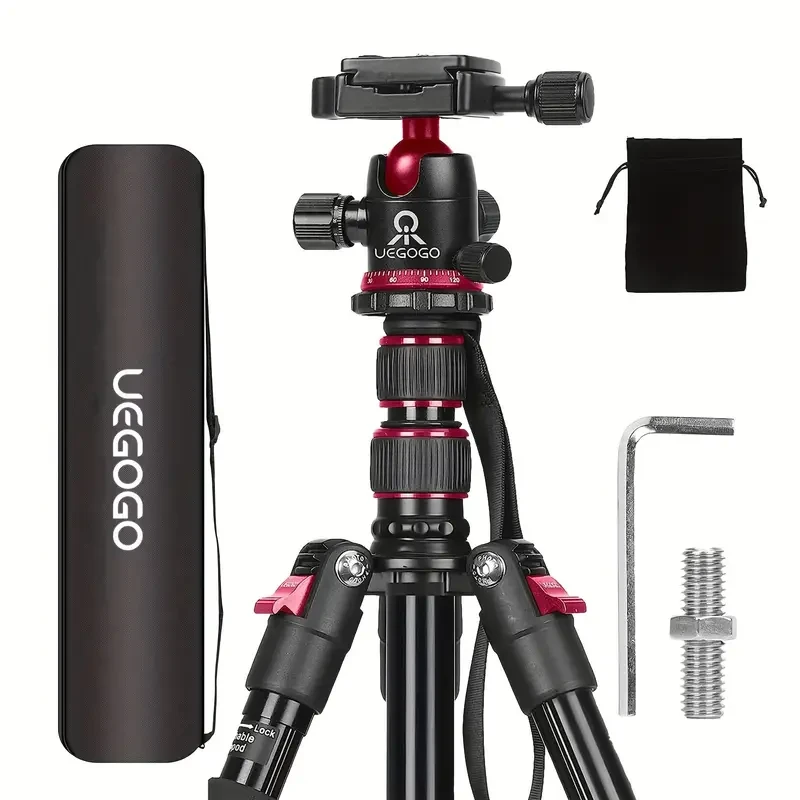
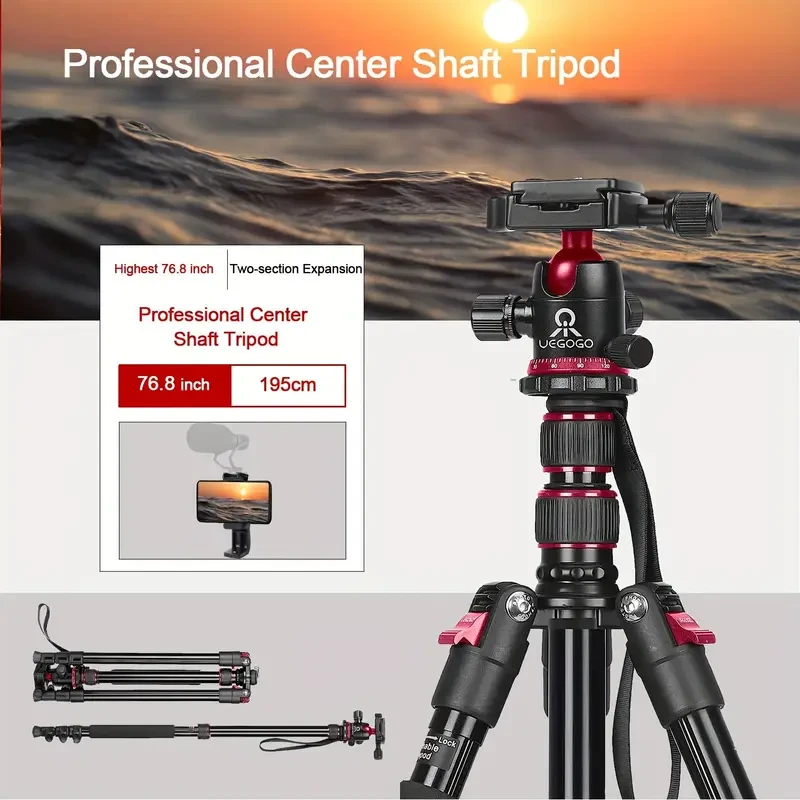
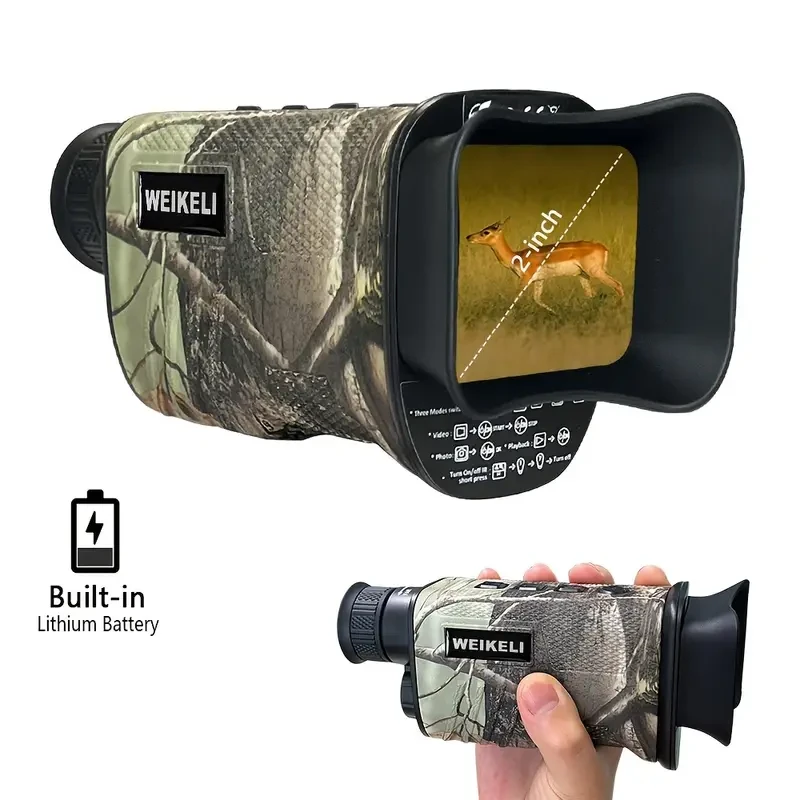

.webp)

.webp)



.jpg)









.jpg)





.jpeg)





.jpeg)



.jpeg)








.jpeg)



.jpeg)

.jpeg)

.jpeg)

.jpeg)




.jpeg)
.jpg)

.jpeg)






.jpeg)
.jpeg)




.jpeg)





.jpeg)


.jpeg)

.jpeg)

.jpeg)

.jpeg)







.jpeg)
.jpeg)
.jpeg)





.jpeg)



.jpeg)






.jpg)
.jpeg)









.jpg)


ulva-Logo.jpg)




.jpeg)



.png)








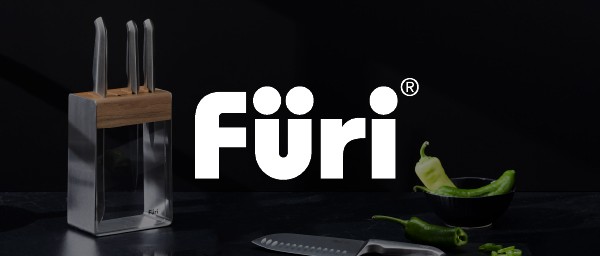






.png)
















